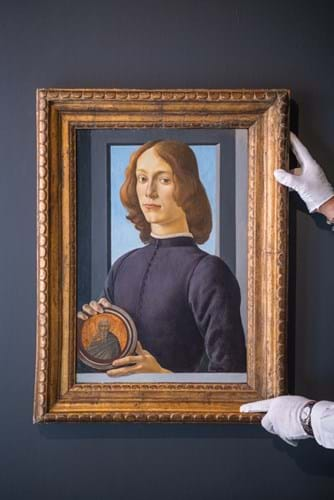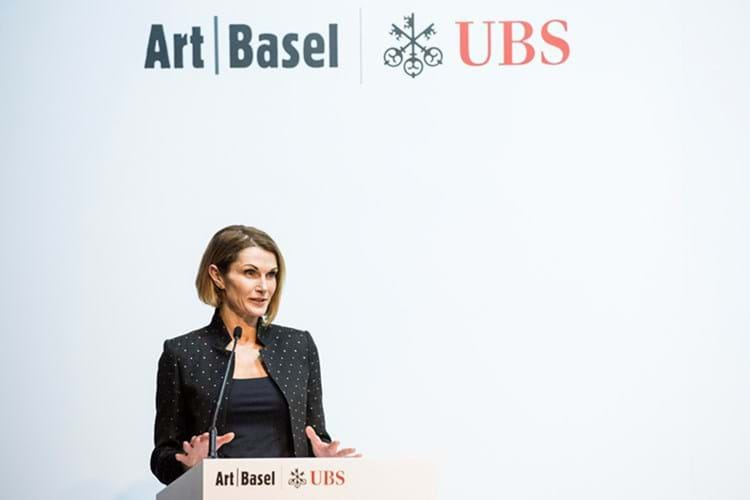The Art Market 2022, the sixth edition of The Art Basel and UBS Global Art Market Report, says the UK has slipped from second to third in the world hierarchy with its total share of a $65bn market falling 3% to a historic low of 17%.
The US market ($28bn) retained its leading position in 2021, shifting up slightly to 43% of worldwide sales by value with the Chinese market ($13.4bn) the second largest with 20%. The UK’s share was an estimated $11.3bn. Anthony Browne, chairman of the British Art Market Federation (BAMF), said the report “did not make for easy reading from the UK perspective”.
The report cites the recent decline in UK imports of art and antiques (down by a third in 2020 and by a further 18% in 2021) as indicative of a weakening position.
At least some of the blame is laid at the door of the formal exit from the EU in January 2021, since when all imports from EU states have been subject to VAT and customs checks. The report concludes: “While the data shows that much of the high-value trade potentially lost to London was to the benefit of the hubs outside Europe in 2021, most notably the US, some domestic EU art trade may have also been transferred outside of the UK to other EU states, boosting markets such as France and Germany.”
Uplift for France
After a drop of over 30% in 2020, sales in France had a particularly strong uplift in 2021, increasing in value by 50% year-on-year to $4.7bn, bringing the market to its highest point in 10 years.
The French auction market was particularly strong – an uplift of just over 60% reaching $2.2bn and a global share rising from 6% to 9%. These figures were 28% higher than pre-pandemic levels.
Sales in Germany, Spain, and Italy also posted strong, double-digit growth. Measured without the UK in both 2020 and 2021, sales in the EU-27 advanced by 37% year-on-year.
Browne believes it is the UK’s “failure to take advantage of the opportunities offered by Brexit and remove the barrier of import VAT” that has “put us at a disadvantage on every level”. BAMF has lobbied on cross-border trade issues affecting the art market since the vote to leave the EU in June 2016 but believes the removal of VAT on art imports remains an achievable goal.
The tax with a net benefit of £16m annually for HM Treasury is, says Browne, “not a fiscally important tax” but one that “is the key to the UK’s future and status in the global art market”.
Recovery from Covid
The Art Market 2022 report looks at the continued and varied effects of the global pandemic on various sectors of the trade last year. Its headline is that the market as a whole rebounded significantly in 2021 after its Covid 19 dip.
Following its biggest fall in sales in 10 years in 2020, trade recovered strongly in the following 12 months, with aggregate sales of art and antiques by dealers and auction houses reaching the estimated $65.1bn, up 29% from 2020. Clare McAndrew of Arts Economics, author of the report, said: “The art market has demonstrated incredible resilience in 2021, with a strong uplift in aggregate sales, despite still operating under some very challenging conditions. Dealers and auction houses successfully adjusted to a new two-tier system of online and offline sales and events.”
All segments of the market grew year-on-year in 2021.
Sales of fine and decorative art by dealers reached an estimated $34.7bn in 2021, increasing 18% year-on-year but still below the level of 2019, while sales at public auctions reached an estimated $26.3bn in 2021, an increase of 47% on 2020. The auction market in China is thought to be the world’s largest with a 33% share (confirming the veracity of the data remains problematic), marginally ahead of the US at 32%.

The top-selling Old Master of the year, Young Man Holding a Roundel by Sandro Botticelli which sold for $92.2m including premium at Sotheby’s, made a significant difference to the sector’s overall total.
As always, the arrival to market of a single blue-chip consignment – the $646m Macklowe collection or Botticelli’s $92.2m Portrait of a Young Man Holding a Roundel (both sold by Sotheby’s New York) – can make the difference.
“Holding to form, the critical mass of the market orbits around a relatively small number of incredibly high-priced pieces,” said Marc Spiegler, global director at Art Basel. “Once again, auction houses proved the most successful in attracting new buyers while galleries suffered disproportionately from the long drought of fairs.”
The number of art fairs at which dealers exhibited in 2021 was still well below pre-pandemic levels.
Although its share of the overall cake dropped from 20 to 25%, as in-person sales rebounded the online market continued to expand in 2021, growing by 7% to reach an estimated $13.3bn.
The value of sales for art-related NFTs expanded over a 100-fold year-on-year reaching $2.6bn. The report said that, on average, art-based NFTs are bought and resold within around one month versus the average resale period on the traditional art market of 25 to 30 years.






